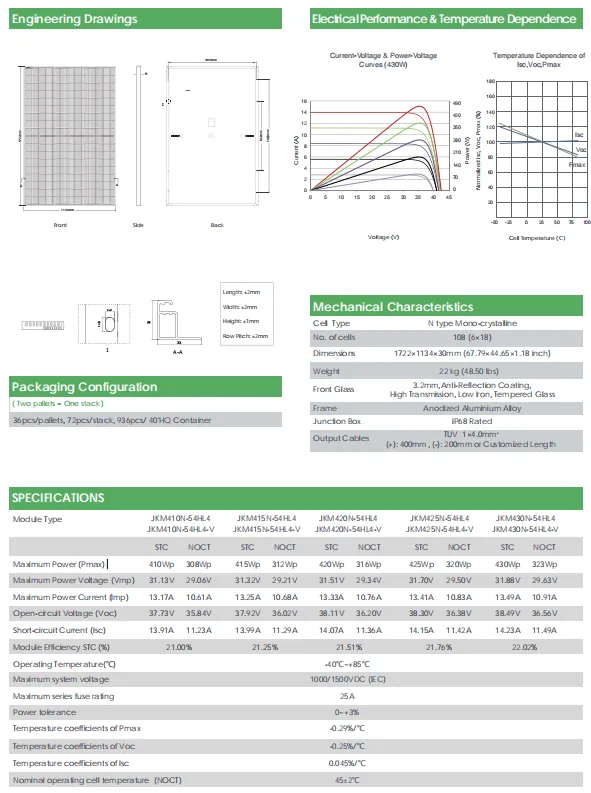Trends in Solar Panel Pricing and Market Rates for Renewable Energy Solutions
Understanding Solar Panel Rates Trends and Factors Influencing Prices
As the world shifts towards sustainable energy solutions, solar panels have emerged as a leading option for generating clean electricity. The rise in popularity of solar energy systems has inevitably influenced solar panel rates, a trend that homeowners, businesses, and policymakers should closely monitor. This article will delve into the factors that determine solar panel prices, current trends in the market, and what the future may hold.
Factors Influencing Solar Panel Rates
1. Market Demand and Supply The basic economic principle of supply and demand plays a significant role in determining solar panel rates. As more individuals and businesses seek to adopt solar energy, demand increases. If the market can meet this demand effectively, prices may stabilize. However, in times of high demand coupled with supply chain issues, prices can rise.
2. Technological Advancements The solar industry is continually evolving, with advancements in technology leading to more efficient panels. For instance, newer models can convert sunlight into electricity more effectively, which can reduce the overall number of panels needed for a particular installation, consequently lowering costs. As these technologies become available, older models may see their prices drop, affecting overall market rates.
3. Government Incentives and Tax Credits Policies play a crucial role in shaping solar panel rates. Various government incentives, such as tax credits, rebates, and grants for solar installation, can significantly lower the net cost of solar panels. For instance, initiatives like the Investment Tax Credit (ITC) in the United States provide a substantial tax break for solar system installations, making them more affordable for consumers.
4. Material Costs The prices of raw materials used in the production of solar panels, most notably silicon, can fluctuate based on geopolitical tensions, tariffs, and trade policies. A rise in material costs can lead to higher solar panel rates as manufacturers pass these costs onto consumers.
5. Global Market Trends The international solar market is interconnected. Changes in solar panel prices in one country can affect pricing in others. For example, a reduction in manufacturing costs in countries like China can lead to lower prices for solar panels globally, benefiting markets everywhere.
solar panel rates

Current Trends in Solar Panel Rates
Over the last decade, solar panel rates have witnessed a dramatic decline, making solar energy more accessible than ever. Research indicates that the average cost of solar photovoltaic (PV) systems has dropped by over 80% since 2010. This trend is expected to continue as technology improves and production becomes more efficient.
However, the situation can vary significantly by region. For instance, regions with abundant sunlight and supportive policies, like California, often see lower rates due to the higher concentration of solar installations and competition among suppliers. In contrast, areas with less sunlight or restrictive regulations may experience higher costs.
Future Outlook
Looking ahead, several factors could influence the trajectory of solar panel rates. As global initiatives to combat climate change strengthen, demand for renewable energy sources will likely increase. This heightened demand can lead to price fluctuations in the short term.
Moreover, as battery storage technology continues to improve and prices decrease, homeowners may find that combining solar panels with battery systems makes the overall investment more attractive over time. This could lead to an increase in adoption rates, further impacting solar panel pricing structures.
Conclusion
In conclusion, understanding solar panel rates involves a complex interplay of demand, technology, government policies, material costs, and global market trends. As the solar energy market evolves, staying informed about these factors is essential for anyone considering an investment in solar technology. As we move towards a more sustainable future, the affordability and accessibility of solar panels will play a crucial role in energy transitions worldwide.
-
String Solar Inverter: The High-Efficiency Solution for Smart Solar EnergyNewsJul.14,2025
-
Revolutionizing Rooftop Energy with the Power of the Micro Solar InverterNewsJul.14,2025
-
Power Independence with Smart Off Grid Solar Inverter SolutionsNewsJul.14,2025
-
On Grid Solar Inverter: Powering the Future with Smart Grid IntegrationNewsJul.14,2025
-
Monocrystalline Solar Panels: High-Efficiency Power for the Future of Clean EnergyNewsJul.14,2025
-
Bifacial Solar Panel: A Smarter Investment for Next-Generation Energy SystemsNewsJul.14,2025







